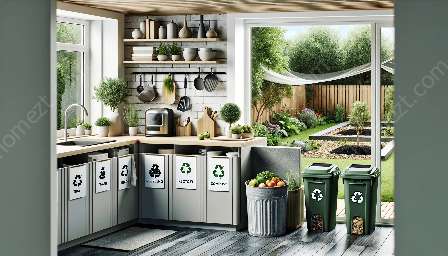Introduction to Hazardous Waste Management at Home
Managing hazardous waste at home is an essential aspect of ensuring the safety of your household and the environment. From common household products to DIY projects, there are numerous items that can be classified as hazardous waste and require proper handling and disposal.
Identifying Hazardous Waste
Before delving into the management of hazardous waste, it's crucial to understand what constitutes hazardous materials. Common examples of household hazardous waste include cleaning products, pesticides, batteries, fluorescent light bulbs, electronics, and paint.
Proper Waste Management Techniques
Implementing proper waste management techniques is crucial for safely handling and disposing of hazardous waste at home. Utilize the following techniques to effectively manage hazardous materials:
- Proper Storage: Store hazardous materials in their original containers or in designated, clearly labeled containers to prevent leaks and spills. Keep these items out of reach of children and pets.
- Segregation: Separate hazardous waste from regular household waste to facilitate proper disposal. Always follow local regulations and guidelines for segregation.
- Disposal: Research local hazardous waste disposal options, such as community collection days or specialized drop-off locations, to ensure safe and responsible disposal.
- Reduce and Reuse: Minimize the generation of hazardous waste by reducing the use of hazardous products and exploring alternative, eco-friendly options. When possible, opt for reusable or refilled products to reduce waste generation.
Home Cleansing Techniques
When it comes to home cleansing, it's essential to prioritize eco-friendly practices while effectively managing hazardous waste. Consider the following techniques for a cleaner and safer home:
- Natural Cleaners: Utilize natural and non-toxic cleaning products to minimize exposure to harmful chemicals. Ingredients such as vinegar, baking soda, and lemon can be used to create effective cleaning solutions.
- Proper Ventilation: Ensure adequate ventilation while using cleaning products to reduce indoor air pollution and maintain a healthy living environment.
- Storage and Organization: Properly store and organize cleaning supplies to prevent spills and accidents. Keep hazardous cleaning agents out of reach of children and pets.
- Regular Maintenance: Schedule regular home maintenance to address leaks, drips, and other potential sources of hazardous waste. Promptly repair any damaged or malfunctioning household items to prevent hazardous waste accumulation.
Conclusion
By implementing proper waste management techniques and incorporating eco-friendly home cleansing practices, you can effectively manage hazardous waste at home while safeguarding the well-being of your household and the environment. Prioritize safety, responsibility, and sustainability in your approach to managing hazardous waste, and remember to stay informed about local regulations and resources for proper disposal.


